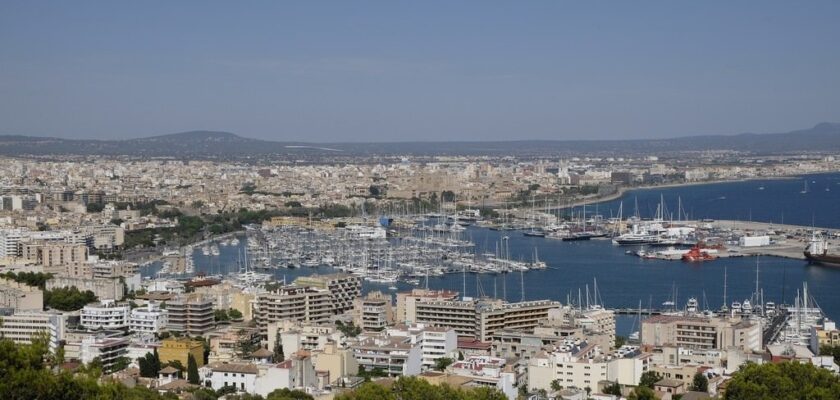Castell de Bellver
Castell de Bellver, or Castell de Bellver, standing majestically on a 140-meter high hill, is one of the most famous tourist attractions of Palma de Mallorca. It is the only Gothic building in Spain built in an unusual circular shape for this style. It is located a few kilometers from the city, from which it offers magnificent views. Especially fascinating panorama of the Bay of Palma. And in clear weather, even the outline of the island of Cabrera can be seen from here.
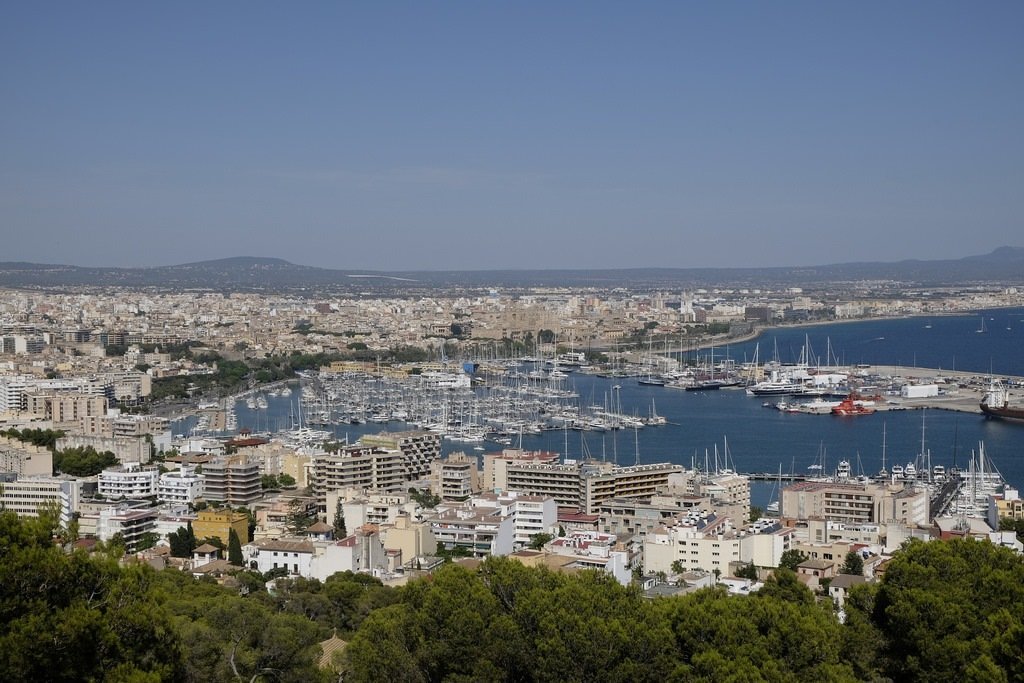
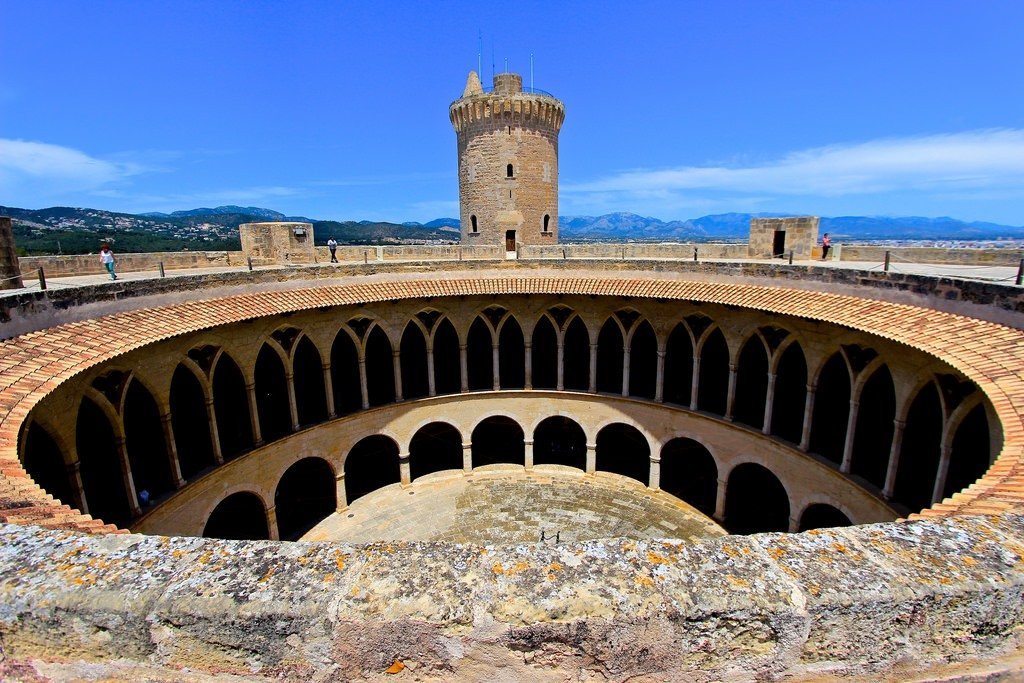
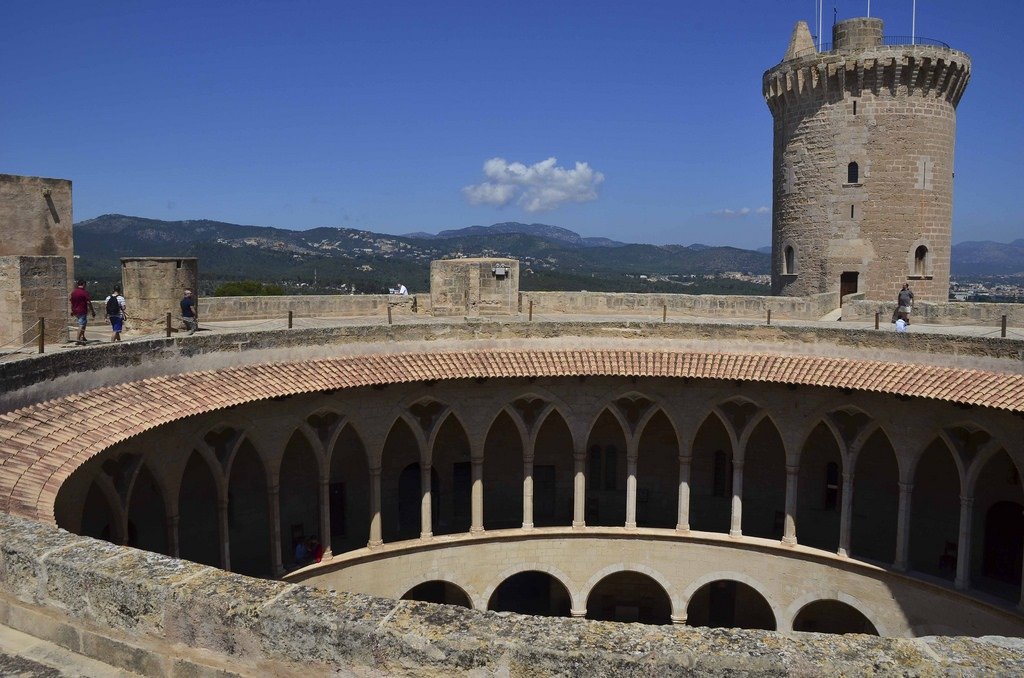
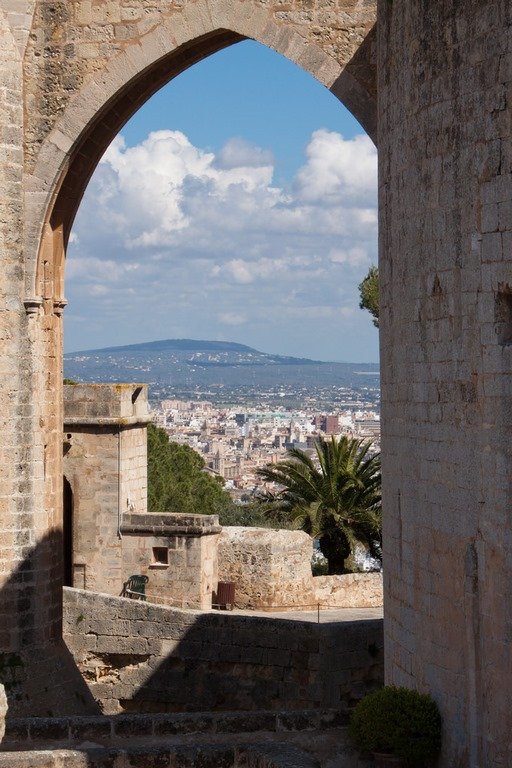
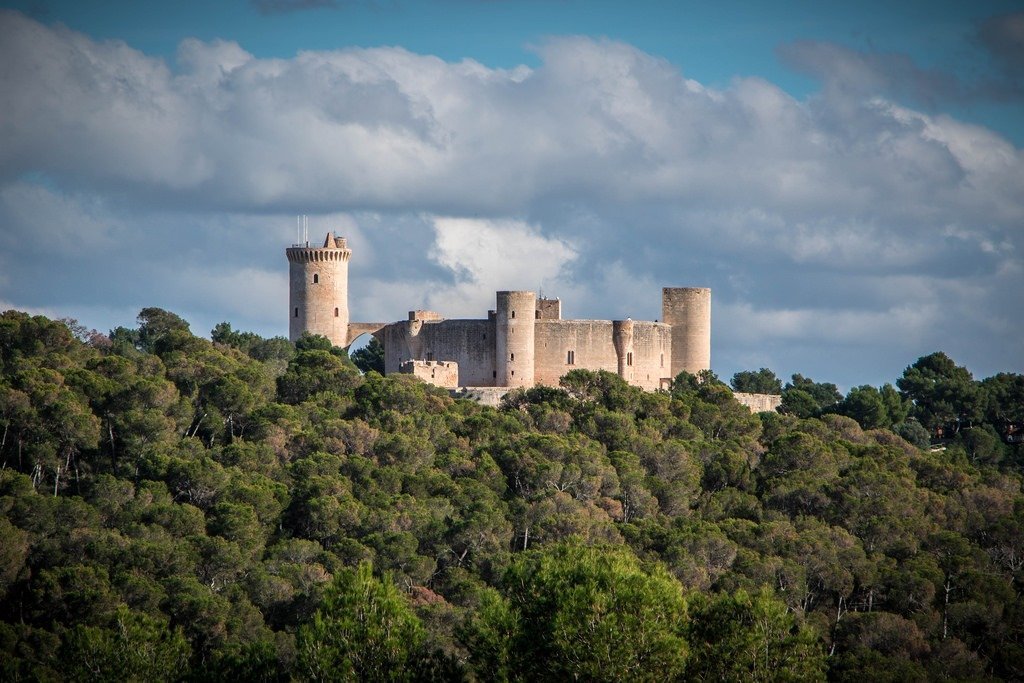
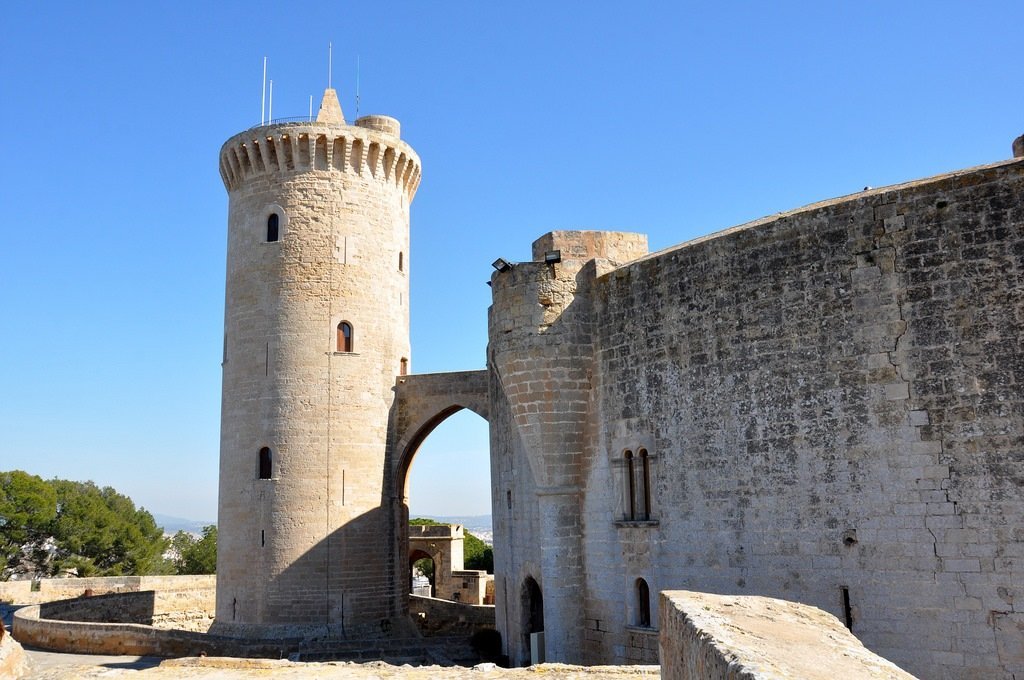
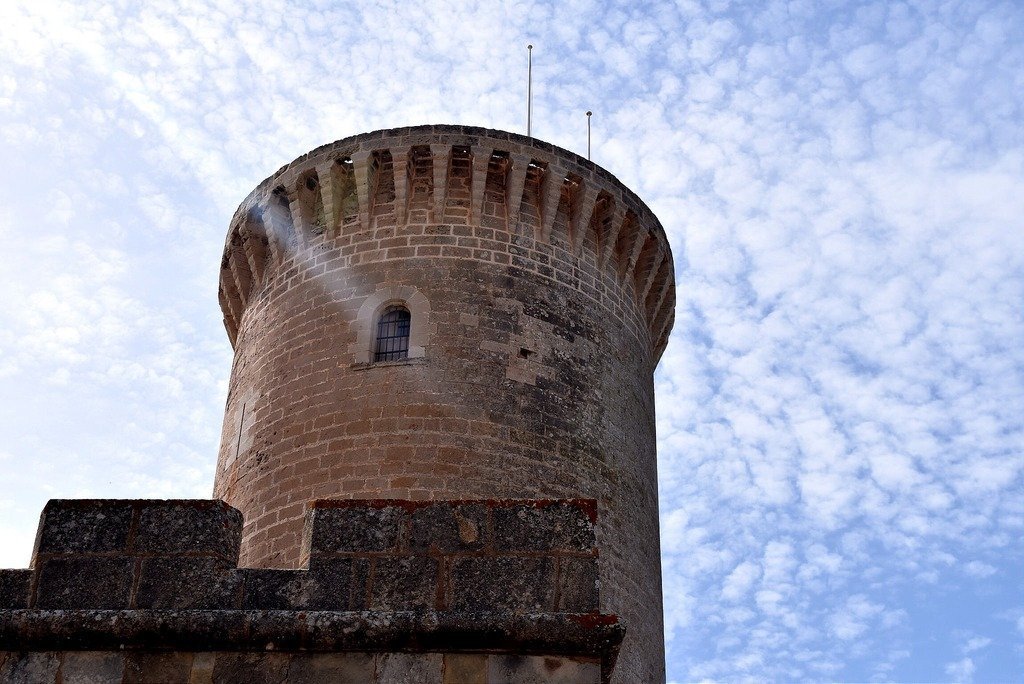
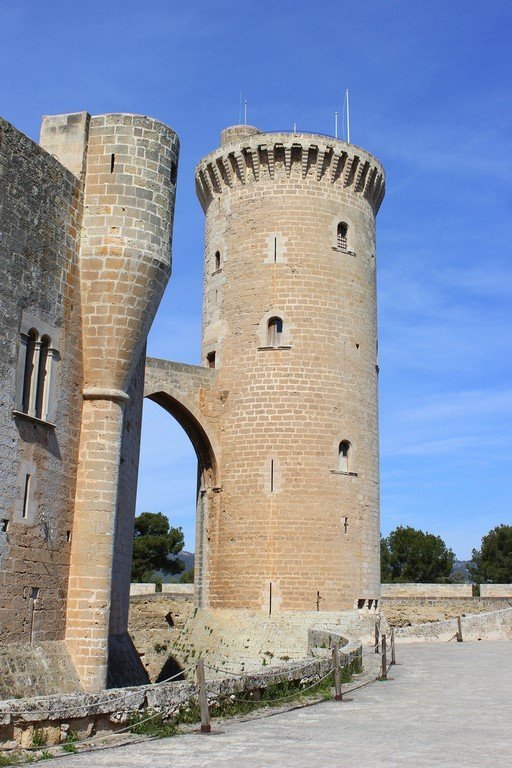
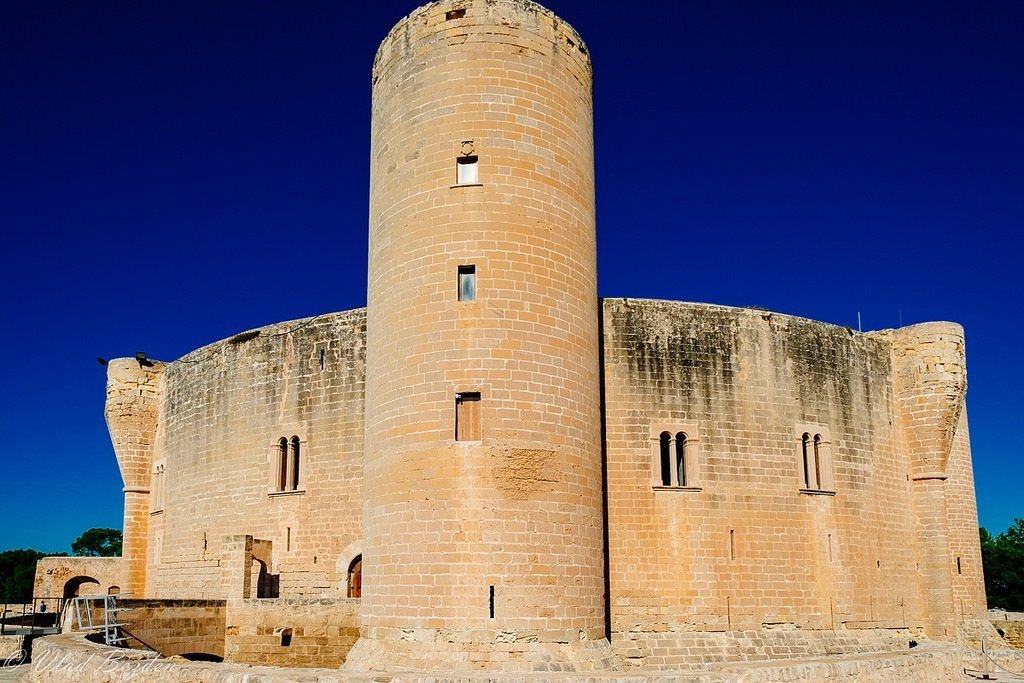
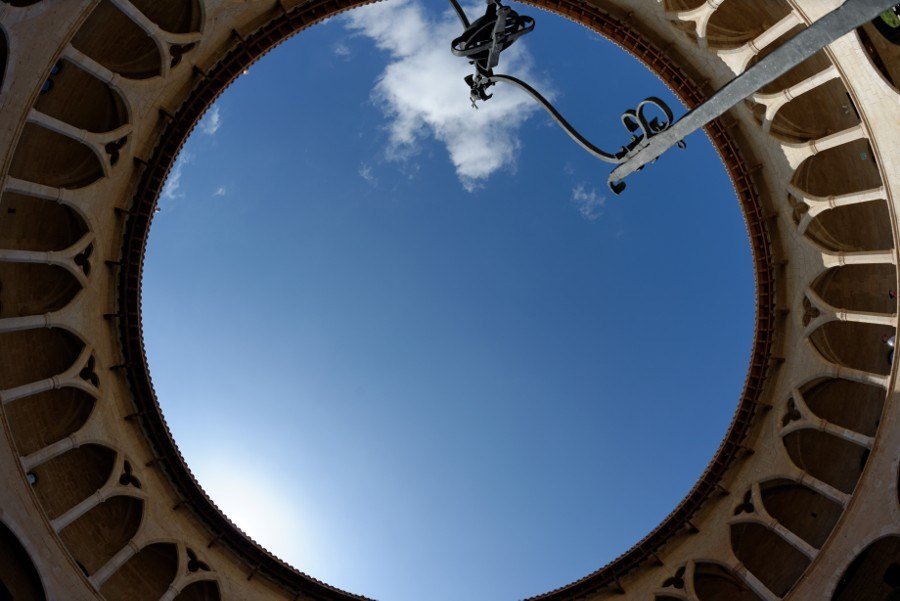
Video: Belver Castle
ContentsHighlights
Belver Castle is connected to the royal palace by an underground corridor. The latter is so high that a rider on horseback can ride through it without any problems, and without even buckling. What is interesting, the tunnel led from the king’s chambers, but for her majesty this type of evacuation for some reason was not provided. This medieval attraction holds many such mysteries. Besides, it was not always the monarch’s residence, later it was used as a prison. If the walls of the castle could talk, they would probably tell a lot of interesting and tragic not only from the life of the royal family, but also of ordinary prisoners: the conditions of their stay here can hardly be called human.
.
Well, and today Belver Castle is a place of pilgrimage for tourists. In it, except for the architecture, there is nothing reminiscent of the past sinister times. The structure has two levels. The lower level has round arches and a flat ceiling, and the upper level has cross vaults and lancet arches characteristic of the Gothic style.
.Nowadays, the Belver Castle houses the Historical Museum of Palma de Mallorca, whose expositions are of great local history value. In addition to the objects discovered by archaeologists during excavations, you can see a collection of examples of classical sculpture, considered the most valuable art collection of the city, as well as other collections of local art. Any excursion to this amazing place gives an opportunity to get in touch with the historical past not only of a particular city and region, but of the whole of Spain. The castle looks, let’s say, so pristine that it seems as if time has stopped here. If you have a rich imagination, you will surely be able to imagine yourself as a participant of many exciting and exciting events of the distant Middle Ages.
.History of the castle
And there were indeed many events that took place here. Most of them – for example, the capture of Palma in 1229 by King Jaime I of Aragon – can be called momentous without exaggeration. Six years after his triumph, this ruler was also crowned King of Majorca. However, in 1276, his majesty died and his sons succeeded him. The throne passed to the youngest, who went down in history under the name of Jaime II.
.In 1300, the King of Majorca decided to build a castle, entrusting this responsible business to the architect Pere Salve. The interior was handled by another specialist, the painter Francisco Cabalti. Why was a round shape chosen for this masterpiece of Gothic culture, you may ask? Historians did not have to search for the answer to this question for a long time: everything pointed to the fact that the ancient fortress of Herodion, located on the West Bank of the Jordan River, was used as a prototype. It too is round in shape and has four towers – one large, dominant, and three small ones. Jaime II conceived Belver Castle as his family nest, and the picturesque area around Mallorca suited it perfectly.
.
The rounded military Gothic castle was built in 16 years, a record for the time. It became both a royal residence and a defensive fortress. Once during the plague Belver really saved the lives of members of the royal family: the august personages, while the epidemic was raging, did not even show their noses outside. But in 1343-1344 years the castle, as well as the whole of Mallorca, did not resist the onslaught of the troops of Pedro IV Aragonese. He first conquered the city, and then began to besiege the fortress. Eventually Majorca (or Mallorca) became a possession of Aragon. At that time, the castle was a refuge for supporters of Jaime II, the last ruler of the city. It was also home to his widow and sons.
.Belver almost suffered during the peasant uprising of 1391, but the attack of the rebels was repulsed. Three years later, the castle became a refuge for King Juan I of Aragon: he too hid within its walls from the plague that raged in the continental possessions of the monarch.
.
Three centuries later, Belver was militarily modernized, adapting it for the needs of artillery. In 1713, a covered bastion was added to the castle on the north side. Around the same time, the castle became a prison, but not for common criminals, but for political prisoners. One of its most famous prisoners was the famous Spanish writer and politician Gaspar Melchor de Jovellanos, who was held here in the early 19th century. In his younger years, French physicist François Arago, who was accused of espionage activities, hid here from the wrath of the people. Within the walls of the castle of Belver spent his last days and General Louis de Lacy: he was executed here in 1817.
.
In 1931, the city municipality became the new owner of the ancient structure, planning to open a museum under its roof. However, in 1936, Belver was once again turned into a prison. The highway that leads to it was laid by participants in the putsch of July 17-18, 1936, organized by representatives of the Spanish Army Command, led by Generals Franco and Mola, and with the participation of right-wing and far-right parties. A total of 800 prisoners were involved in the heavy labor.
.The Museum of Urban History in Belver Castle was opened, but only in 1976, a year after the restoration of the monarchy in the country, headed by King Juan Carlos I Bourbon. The museum houses artifacts reflecting the history of Palma de Mallorca, from the first settlers to the Middle Ages. On display are, for example, the classical sculptures of Cardinal Despucha. The castle courtyard has been adapted for entertainment events. In particular, classical music festivals are held here. The Balearic Islands Symphony Orchestra, known for its professional performances far beyond the region’s borders, is particularly welcome.
.Belver Castle today
Belver Castle, despite its “rounded” shapes, is strictly oriented to the sides of the world. The main tower, it goes by the name of the Tower of Remembrance, faces directly north. The other three towers, they have a horseshoe shape, are oriented, respectively, to the south, west and east. Four more towers of the castle, the so-called small towers, point strictly to the southeast, northwest, southwest, and northeast. One of the larger towers, the Tower of Honor, is detached from the castle. To get to it, you have to cross a double-arch bridge.
.The main tower should be mentioned separately. Its height is 25 meters, it has four floors and its diameter is 12 meters. An arched 7-meter bridge connects the Tower of Remembrance with the roof of the citadel of Belver Castle. The citadel itself is about 50 meters in diameter. The main entrance to the citadel is located near the north-west turret and is reached by an L-shaped bridge. Another entrance, similar to the main entrance, is located at the southwest facing turret.
.38 machicolations – so called for the loopholes located in the upper part of the hinged loopholes, intended for vertical firing at the enemy during assaults – crown the tower and make it very recognizable. The lower floor of the tower was used as a dungeon, and its height was no less than 5 meters. One of the creepiest cells in the former prison, called “The Cauldron”, was filled with water and was located here. There were no windows in this stone room: no one could stand such a torture chamber for long. The strongest and sturdiest could endure a year at most. Naturally, all these unfortunates eventually died in the “Kotelka”.
.Walking into the courtyard of Belver Castle, you will see the well. It has a history of its own. In the olden days it collected rainwater. Now it is filled with currency of different countries and denominations. There is a belief that if you throw a coin into the well, you will get married in a year. If desired, the celebration can be organized in the castle itself. Marriage ceremonies are usually organized here on Saturdays – of course, for a fee. The wedding ceremony is held in the former Throne Hall. If any of our readers are interested in this opportunity, hurry up. It is necessary to sign up for a wedding ceremony at Belver Castle at least six months in advance, as there are a lot of people wishing to attend.
.
Opening hours
The attraction is open daily for visitors and tourists. On Mondays to Saturdays the opening hours are from 8:30 to 20:30, on Sundays from 10:00 to 18:30. The entrance ticket costs 4 euros. On Sundays and public holidays, admission is free.
.How to get there
Belver Castle is located at Carrer de Camilo José Cela, 17 Western Palma, 07014.
.The castle can be reached by public transportation. There are buses number 3, 46 and 50 that run here. Your stop is Plaça de Gomila. From there you need to walk up the mountain. The whole journey will take about 15 minutes.
.